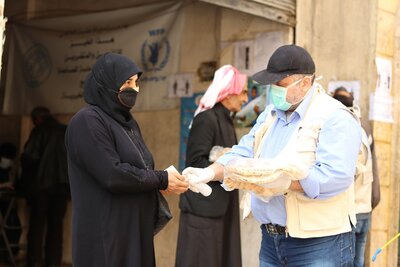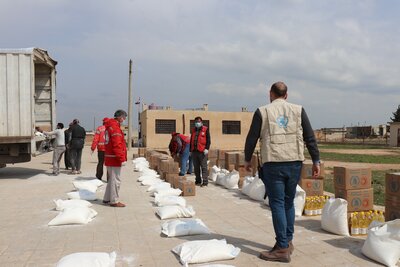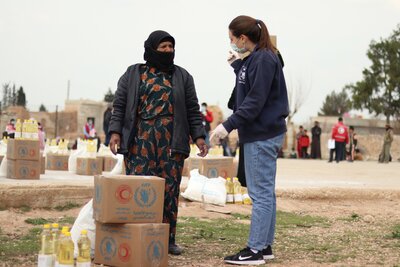WFP’s response to COVID-19 in pictures

The coronavirus is threatening millions of people already vulnerable due to food insecurity, malnutrition and the effects of conflict, climate change and other disasters. The World Food Programme (WFP) is working around the clock to maintain food-assistance programmes which offer a lifeline to 87 million people. Here is a snapshot of our work on the frontlines.
Mozambique
In Savane Resettlement Centre, in Dondo District, Sofala Province, WFP is assisting 265 Cyclone Idai-affected families, around 1,325 people, with electronic vouchers to buy food, facilitated by the agency's Scope system. Each family receives a monthly food ration: 40 kg of rice-maize meal; 9kg of beans; 4 litres of vegetable oil and 1kg of salt. Vouchers are exchanged for food packs at a distribution point via a contracted retailer.

WFP Mozambique has moved quickly to develop and implement plans to reorganize food distributions, adapting them in order to protect both staff and food assistance programme participants.

People are divided into small groups and asked to stay 1.5 metres apart when collecting their food. Hand-washing stations have been installed in food distribution sites, with personal protective gear issued to staff. Communities receive an in-depth briefing about the COVID-19 pandemic and preventive measures.

The Islamic Republic of Iran
WFP assists more than 30,000 people in Iran — largely refugees from Afghanistan — with food assistance. The women in the photographs below are refugees whose tailoring training workshop in Sarvestan, Fars province, took on a sense of urgency when they were asked to sew facemasks.

There are nine such workshops across Iran, one of the worst-affected countries by coronavirus. Last month WFP received its biggest single grant for its work in Iran — US$7 million from Japan.

Sixty percent of the contribution will buy a three-month supply of protective equipment for more than 5,000 staff and volunteers from the Iranian Red Crescent Society who are responsible for screening people at city entry points. The remaining 40 percent will go towards supporting 31,000 Afghan and Iraqi refugees living in settlements across the country.
From Brindisi to Beijing, and other connections

From Brindisi, on the southern tip the country's Adriatic coast, the United Nations Humanitarian Response Depot (UNHRD)— one of six across the world run by WFP — despatched safety equipment to Wuhan, via Bejing, in February. Few could have guessed, then, that Italy itself would become a COVID-19 hotspot. Below, facemasks, goggles and other medical items are boarded onto a Beijing-bound plane, courtesy of the Italian Agency for Development Cooperation and Italy's Chinese community.

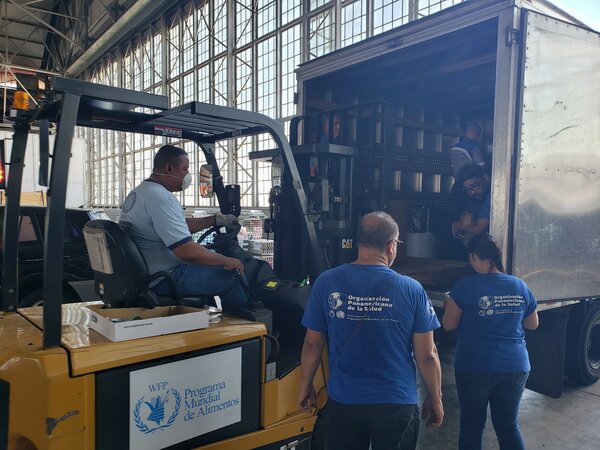
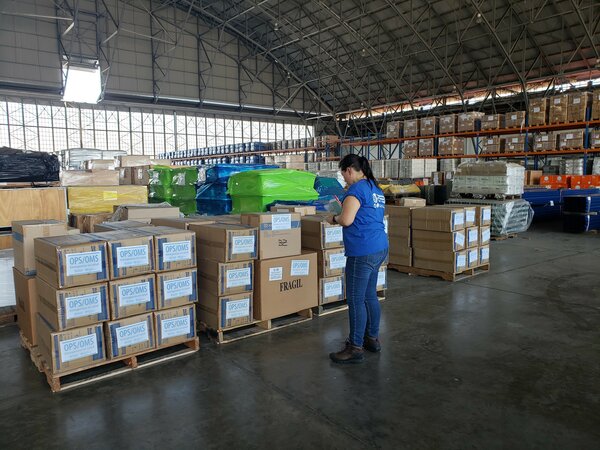


Kenya

In the Kakuma and Dadaab refugee camps in Kenya, WFP provides food to more than 400,000 people each month. Above, a humanitarian worker in protective gear verifies the identity of a refugee receiving food assistance at Kakuma, using a barcode scanner — the use of fingerprints and iris scans is currently suspended because of the risk of spreading infection.

Afghanistan

Thousands of families across Afghanistan do not know where their next meal will come from — authorities have ordered citizens to stay at home and border closures to quell the spread of the coronavirus. WFP continues to assist food-insecure families across the country at this critical time while protecting the people receiving WFP food assistance, the agency's partners and staff.
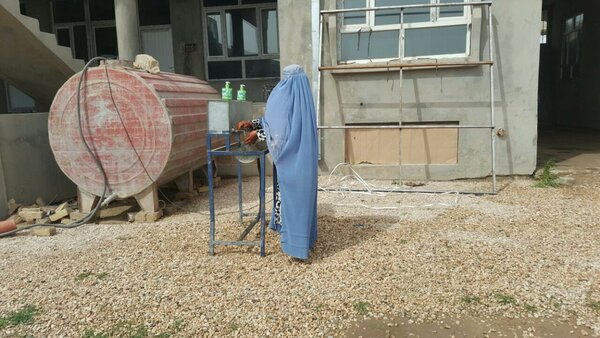
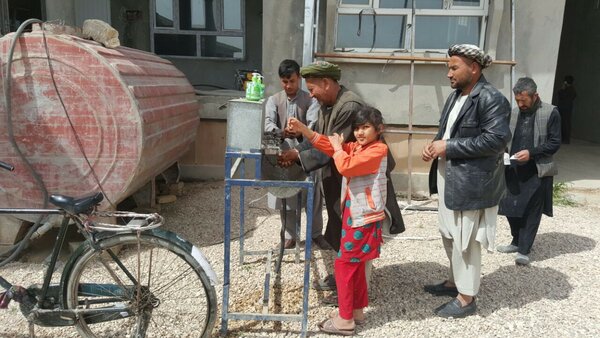
Zimbabwe
WFP Zimbabwe is rolling out risk-control measures at its food distributions in response to the COVID-19 pandemic. It has increased the number of distributions to limit overcrowding, distributed protective clothing and health and safety items to the field, installed hand-washing facilities, and is ensuring social distancing. WFP and its partners have launched a communications campaign to pass important health, safety and hygiene information, via SMS, radio and small community meetings.
The photos below were all taken at a food distribution in Shamvu District.

Social distancing is now the norm at all food distributions in Zimbabwe. People line up in groups of five, widely spaced, to collect their monthly food entitlements of maize meal, split peas and vegetable oil. This food is a lifeline for millions of Zimbabweans right now at the peak of the hunger season.

WFP IT technicians have distributed hand-held devices to all field locations so WFP's partners can scan the SCOPE card at a distance, and people can be verified in a contactless way.

Gloria Kamudemeta, a village health worker from the Government of Zimbabwe, said: "We are present at all WFP food distributions now — passing on information to prevent the spread of the virus. We are making sure everyone washes their hands, as if we don't practise hygiene we will all perish and Zimbabwe will not go forward."

Rebecca Kapaira, a single mother of five children, receives supplies including vegetable oil, for her home in Madziwa village, Shamva district, Zimbabwe. "I am so happy that WFP continued to bring the food this month, despite the country being in lockdown because of the virus. Lack of access to food means more hunger to our families. Looking at what I planted in my field, there was nothing to harvest, so if it wasn't for WFP, I don't know what I would have done for my kids."
Syria
In, Deir Hafer, Aleppo Governorate, WFP is working with partner organization the Syrian Arab Red Crescent to distribute food to the most vulnerable people and ensure that families are aware of COVID-19 and how they can stay safe. Deir Hafer is located 60 km from Aleppo and 12 km from the nearest market, so the 800 people who live here rely heavily on food assistance from WFP to meet their daily needs.
